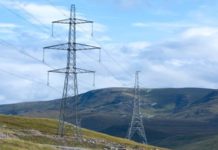 The non-commodity element of energy costs is set to push prices up considerably over the next few years – yet research by YouGov finds awareness of this seems limited. Energy market expert Ben Spry shares the detail behind the forecasts and assesses the impact Demand Side Response can provide to help mitigate price rises
The non-commodity element of energy costs is set to push prices up considerably over the next few years – yet research by YouGov finds awareness of this seems limited. Energy market expert Ben Spry shares the detail behind the forecasts and assesses the impact Demand Side Response can provide to help mitigate price rises
Ask any Energy Manager what they expect energy prices to do over the coming decade, and most will say increase. But if you ask them by how much, the majority would probably struggle to answer.
Indeed, research recently conducted by YouGov, on behalf of npower Business Solutions (nBS), found that two thirds (66%) of senior decision makers responsible for buying energy expect their costs to increase in the next ten years.
But only 13% of these predict rises of 40% or more – which is in line with nBS’s comprehensive forecast of a 40-45% increase by 2028.
These increases are being driven by increasing non-commodity charges – that is the share of the bill that pays for transmission, distribution and network costs, along with an ever-growing raft of government levies to support the UK’s transition to low-carbon generation. (You can get a personalised forecast of your business’s future energy costs at www.Energy-HQ.com/costpredictor/)
Non-commodity charges to rise by more than 60%
“Over the past decade, three new non-commodity charges have been added to bills bringing the total to ten, and the share of non-commodity costs on the average bill has jumped from less than a third to around half,” explains Helen Inwood, Non-Commodity Charging Manager at npower. “By April 2024, we anticipate that this share is likely to increase to more than 60%.”
Yet many energy managers are in the dark about the effect that rising non-commodity charges will have on their business according to the YouGov research, with 58% admitting they are either unaware or unsure about the possible impacts.
“This is perhaps why so many businesses are still are not looking at Demand Side Response as a serious tool that can help to control these rising costs,” says Dan Connor, DSR Development and Delivery Manager at nBS Energy HQ. “We find the businesses who have more awareness around future cost rises are much keener to implement measures such as DSR to help offset the impact. As the cost of inaction rises each year, businesses with a better understanding of how to mitigate peak costs will be at an advantage.”
Higher costs also bring opportunities
The silver lining is that the drivers behind non-commodity cost increases are also helping to open up the market to more opportunities for consumers to make savings.
“Upgrading the UK’s energy infrastructure to cope with more low-carbon and diverse generation requires huge investment,” explains Helen Inwood. “This means some network and distribution charges are likely to increase. But there are also ways to save for those willing to be flexible around when and how they use electricity. For example, moving consumption away from peak charging periods (typically 4pm to 7pm).”
Managing Triad costs
The most expensive peak-related cost is National Grid’s Transmission Network Use of System (TNUoS) charge.
“TNUoS charges are currently levied against consumption during periods of peak national demand (Triads) in the winter season (1 November to 28 February), and can be as much as £54,906* per megawatt,” explains Fred. “Whether part of an overall DSR strategy or as a stand-alone activity, active Triad management to reduce these charges is becoming commonplace, especially with TNUoS costs remaining substantial in the short term.”
nBS already offers a highly-regarded Triad Warning Service, operated by its in-house team of expert analysts and forecasters. Now, via the Energy HQ DSR team, it can also provide an Automated Triad Service.
“Using our Smart Controller, we can automate the delivery of Triad management as well as seeking to optimise the response businesses can provide to increase Triad savings year on year,” says Dan Connor. “In addition, our customers achieve coincidental savings on Capacity Mechanism and Distribution Use of System (DUoS) charges, as a result of Triad management activity.”
It’s worth noting, however, that Triad charging methodology is currently under review by Ofgem and changes may take effect from April 2020 if Ofgem’s Targeted Charging Review is implemented. “National Grid will still be looking at ways to engage consumers to help manage periods of peak demand,” says Helen Inwood. “And as the Distribution Network Operators start to transition into the proposed Distribution System Operator roles, we anticipate a growing requirement for DSR.”
The other non-commodity charge linked to winter demand peaks is the Capacity Mechanism. One of four new charges introduced in 2015 as part of the government’s Electricity Market Reform (EMR) legislation, the Capacity Mechanism is calculated according to consumption during peak periods throughout winter – i.e. 4pm to 7pm on weekdays from 1 November to 28 February.
Government policies to add £50+/MWh by 2020
“Since their introduction, EMR policies – which also include the Contracts for Difference low-carbon subsidy – are forecast to add around £15.10 per megawatt hour (MWh) to the average invoice by 2020,” explains Kate Garth, npower Policy Manager. “This is in addition to existing ‘green’ policies to support renewable generation already in place, which are also set to rise in cost.”
For example, business consumers will face an increase in the Climate Change Levy – by 45% for electricity and 67% for gas – from April 2019 (compared to 2018 charges). This is due to the government transferring the revenue lost from scrapping the Carbon Reduction Commitment scheme.
“Overall, government policies are forecast to add around £55.07/MWh to electricity invoices by April 2020, which is a 33% increase on April 2018 prices – and a 68% increase on April 2017 prices,” says Kate.
The good news for businesses is that DSR can not only reduce these costs, but also provide an opportunity to earn revenue.
Earn revenue from on-site assets
“If you have assets such as standby generators, combined heat and power (CHP) plant or battery storage – or your business operates an energy- intensive process that can be interrupted for short periods – you could participate in one of National Grid’s balancing services,” says Energy HQ’s Fred Howard.
“Our team of DSR experts will remove the complexity by managing all the necessary processes, including the relationship with National Grid. We will also work with you to maximise your DSR performance and revenue.”
In addition, nBS is the only one of the big six energy suppliers to provide a means for businesses to link their DSR activity with the wholesale energy market, to earn additional revenue at times of high market prices.
Tapping into wholesale market opportunities
“Our Wholesale Market Access service provides a managed route to the Day Ahead and Within Day wholesale markets, so customers can sell pre-purchased volume that’s freed up by DSR,” explains Dan Connor of Energy HQ.
“It’s simple to participate in and the whole process can be automated without any disruption to business activities,” continues Dan. “What’s more, Wholesale Market Access can be used as part of a wider DSR strategy or as a stand-alone DSR activity and carries no obligation.”
Certainly, DSR has the potential to deliver savings and even revenue in a variety of ways to offset the impact of rising energy prices. “We estimate that DSR participation can typically save around £45-70k/MW per year – and often more,” says Dan. “But as each business is different, it’s best to get a bespoke quote based on your individual operation and flexibility to get a better idea of what’s achievable.”
To find out more about how DSR could benefit your business and offset rising energy costs, contact npower Business Solution’s experts at Energy HQ via email nbs@npower.com or call 0800 994 9382. You can also visit the website.
And for a personalised forecast of your future energy costs – as well as visibility of what energy management measures such as DSR can contribute to reducing these – visit energy-hq.com/costpredictor
*2018/19 Gross Half-Hourly Demand Tariff for the London region [see https://www.nationalgrid.com/sites/default/files/documents/Final%20TNUoS%20Tariffs%20for%202018-19%20-%20Report.pdf]



